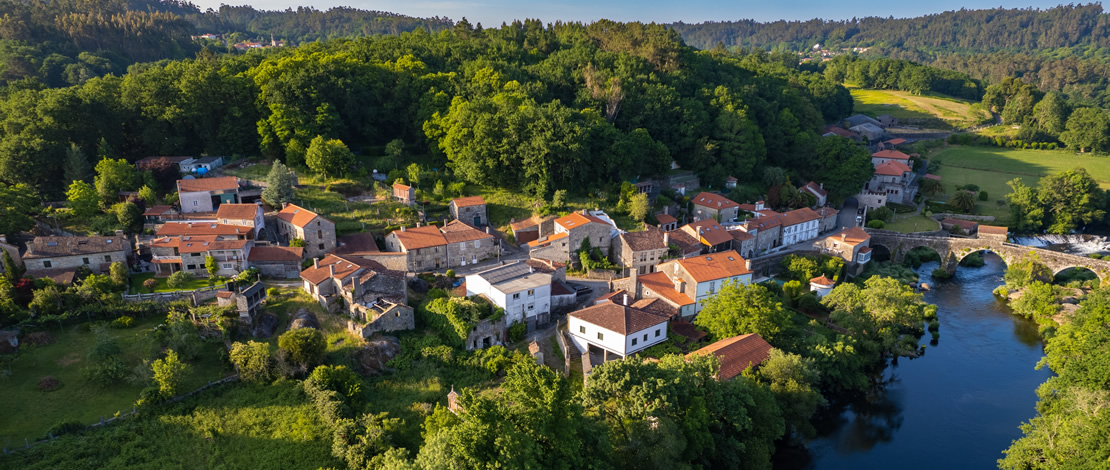Negreira
Distance:20km
The first day runs from Santiago de Compostela to the medieval town of Negreira. Upon arrival at Sarela de Abaixo, you can enjoy a beautiful panoramic view of the city, which is the capital of Galicia. Another attraction of this section is to visit Ponte Maceira, one of the most beautiful villages in Spain. Admire its stone bridge over the Tambre river and the monument ensemble formed by the old village, an old mill, a dam, the chapel of San Blas and the Pazo de Baladrón (19th century). Negreira, notable for the chapel of San Mauro and the Pazo do Cotón, was mentioned by Ernest Hemingway in his novel For Whom the Bell Tolls.More information:From Santiago de Compostela to Negreira







